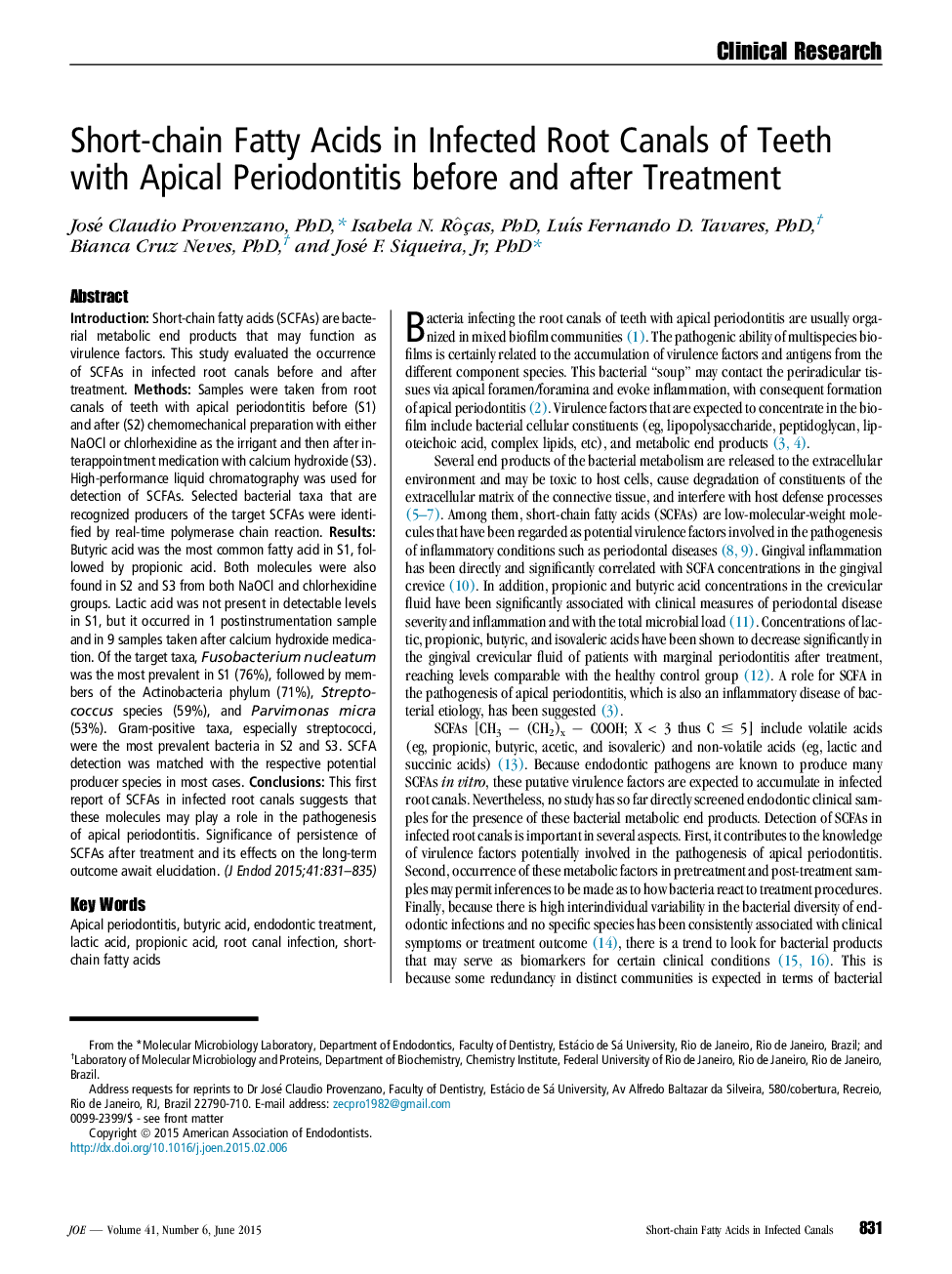| Article ID | Journal | Published Year | Pages | File Type |
|---|---|---|---|---|
| 3148170 | Journal of Endodontics | 2015 | 5 Pages |
IntroductionShort-chain fatty acids (SCFAs) are bacterial metabolic end products that may function as virulence factors. This study evaluated the occurrence of SCFAs in infected root canals before and after treatment.MethodsSamples were taken from root canals of teeth with apical periodontitis before (S1) and after (S2) chemomechanical preparation with either NaOCl or chlorhexidine as the irrigant and then after interappointment medication with calcium hydroxide (S3). High-performance liquid chromatography was used for detection of SCFAs. Selected bacterial taxa that are recognized producers of the target SCFAs were identified by real-time polymerase chain reaction.ResultsButyric acid was the most common fatty acid in S1, followed by propionic acid. Both molecules were also found in S2 and S3 from both NaOCl and chlorhexidine groups. Lactic acid was not present in detectable levels in S1, but it occurred in 1 postinstrumentation sample and in 9 samples taken after calcium hydroxide medication. Of the target taxa, Fusobacterium nucleatum was the most prevalent in S1 (76%), followed by members of the Actinobacteria phylum (71%), Streptococcus species (59%), and Parvimonas micra (53%). Gram-positive taxa, especially streptococci, were the most prevalent bacteria in S2 and S3. SCFA detection was matched with the respective potential producer species in most cases.ConclusionsThis first report of SCFAs in infected root canals suggests that these molecules may play a role in the pathogenesis of apical periodontitis. Significance of persistence of SCFAs after treatment and its effects on the long-term outcome await elucidation.
